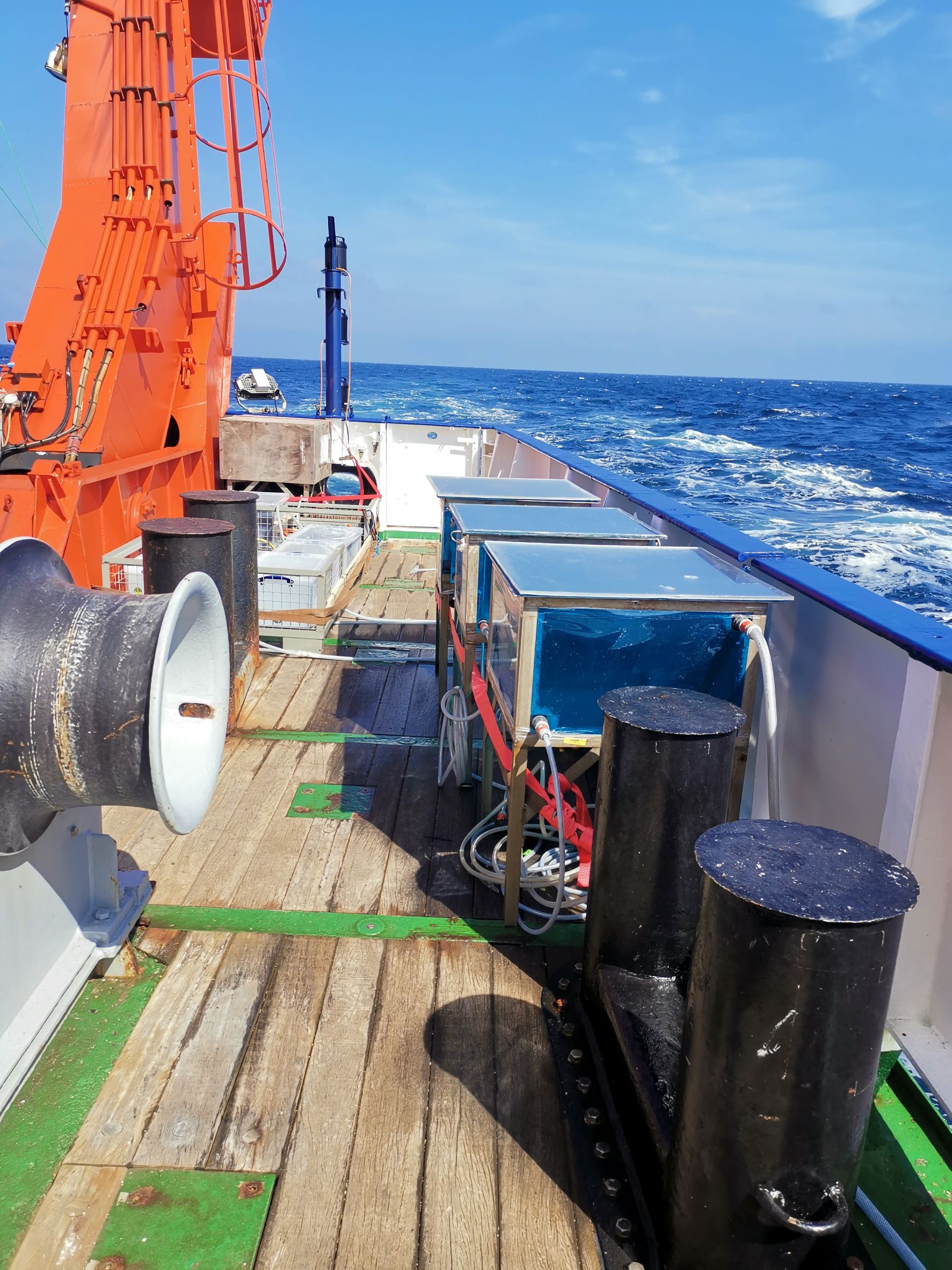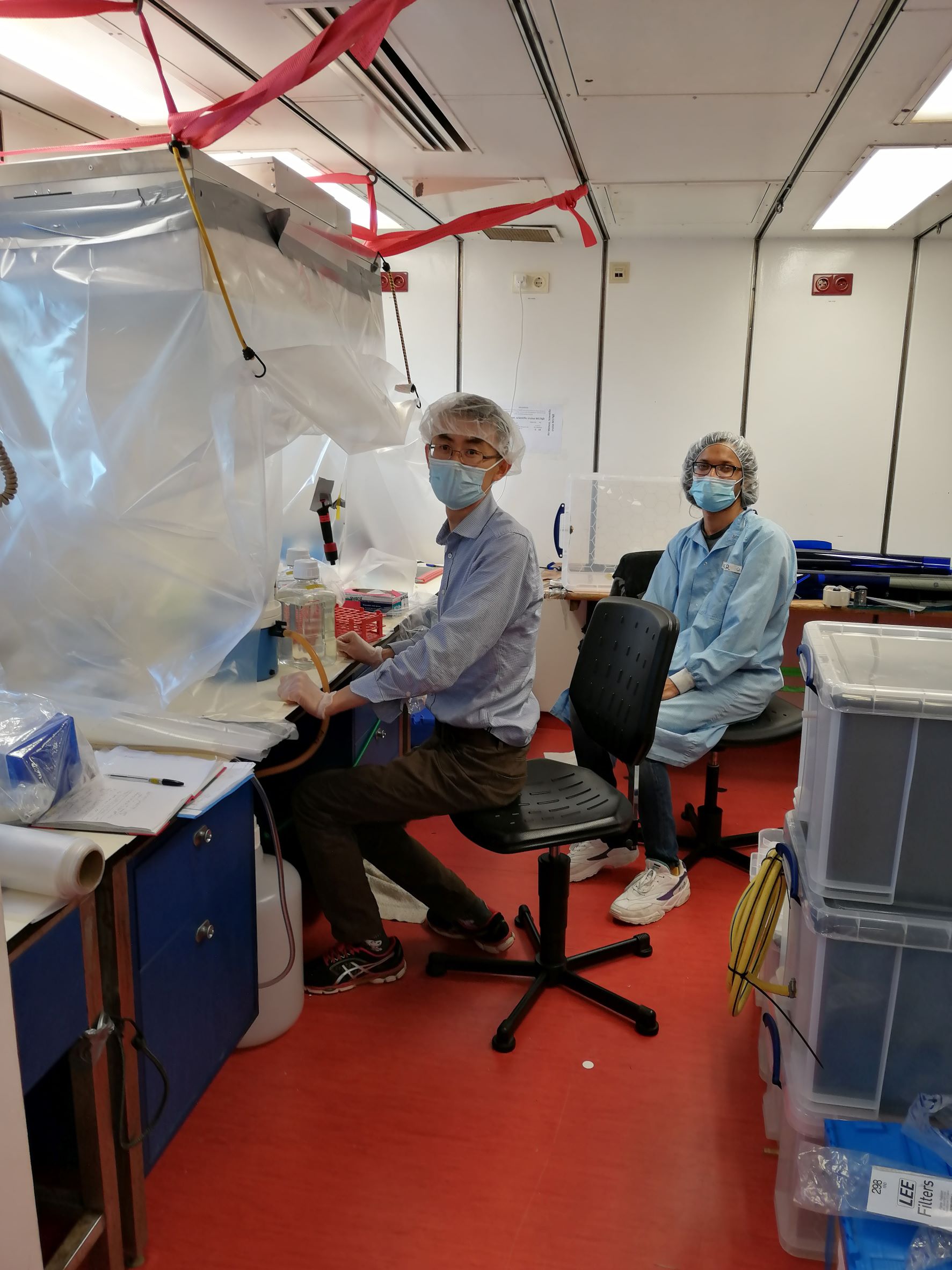Anthropogenic greenhouse gas emissions such as carbon dioxide (CO2) are causing climate change, global warming, and ocean acidification. Microscopic plants called phytoplankton, living in the surface oceans, sequester 50% of global CO2 and supply >50% of new nitrogen used for primary production. Other than light and major nutrients, phytoplankton growth is strongly influenced by availability of the metal iron (Fe), because the metal is essential for photosynthesis and nitrogen fixation, but is very scarce in the open ocean.
In order to understand how Fe controls atmospheric CO2 levels and oceanic productivity, it is important to first attempt to understand the fundamental controls on availability of the metal to marine phytoplankton. On the M176/2, researchers from GEOMAR (i.e., Dr. Fengjie Liu, Mr. Zawad Reza, Dr. Martha Gledhill, Prof. Eric Achterberg) will collect in situ phytoplankton community, and they will use the stable 57-Fe isotope to trace its bio-uptake by the local phytoplankton community. The central hypothesis they want to examine is that Fe availability to phytoplankton cells depends upon the Fe chemistry in the phycosphere, a micrometer scale space which directly surrounds a phytoplankton cell, rather than the Fe chemistry in the bulk seawater (the long-standing paradigm).

